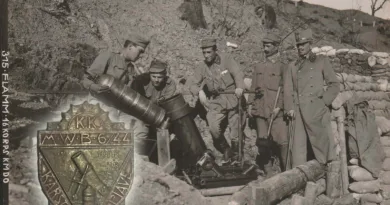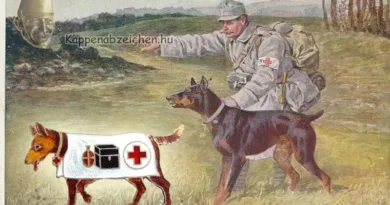Sturmtruppe – Assault troops 2.
Of the many special units, assault troops receive the most attention. Their badges are the most popular among badge collectors. In my previous post, I already described some basic information about them. This post will talk about the fact that there are several badges made with assault troops’ motifs that are not really what they seem!
The two assault soldiers in the opening image show the origins of the most common motifs. The most important and scariest weapon of the troops was not the short-barreled rifle thrown backwards, but the hand grenade. It’s on almost every photo of the assault soldiers, held in hand, strapped to the waist belt, or stored in sandbags carried over the shoulders. The grenade was the “coat of arms of their craft”. The other important criterion was the assault helmet. Less well known is that at the beginning of the Great War, soldiers did not wear helmets at all, they were fighting in field caps. Helmets began to be manufactured and distributed on the fronts from 1915 onwards. As capacity was insufficient, not all soldiers received helmets. When they were pulled out of the front line, the helmet had to be returned. The assault troops formed from the end of 1915 were, of course, properly equipped with helmets. The limited production capacity is also reflected in the fact that some photos show soldiers in looted Italian helmets.
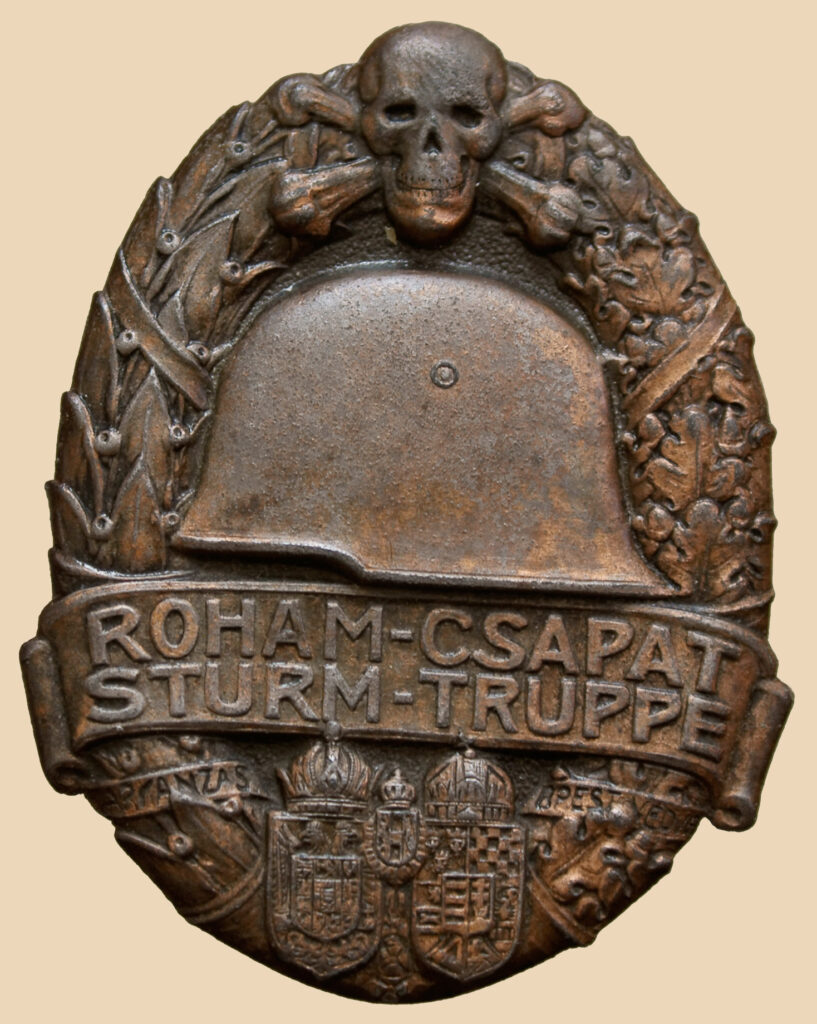
Assault troop badges are best identified by the inscription. Most badges have the exact definition of the team, including that the unit was an assault team. This word “Sturmtruppe” is also on the general assault troop badges. And among the motifs on the badge, we almost always see the helmet and the hand grenade. In addition to these, there is often a skull or skeleton symbolizing death.
Here we come to the badges that seem to be, but are not really made for assault teams. In most of these, the skull depicting death is misleading. We see a grenade thrower on many badges, yet, for some reason, these badges were never confused with assault badges. The death-headed pieces, on the other hand, do. Even if there was an inscription on the badge that did not refer to the assault teams. In this post, I present two of these. One is the insignia of the 85th Infantry Regiment’s separated battalion. The skull does not so much depict death on this, as it has a Belsaglieri hat on it. However, the snake that emerges from the skull is quite creepy.
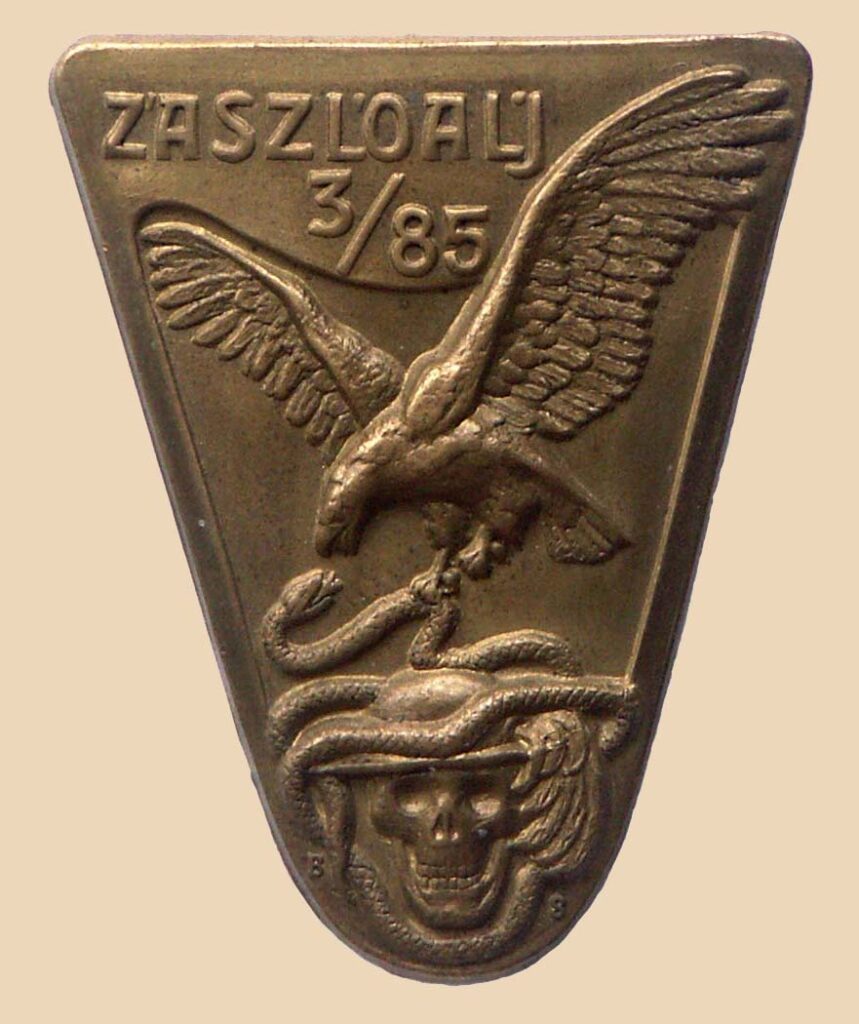
The other badge belongs to one of the battalions of the 62nd Infantry Regiment. Here the text only reveals that it was a unit fighting in Volhynia. However, the history of the regiment reveals that, separated from the mother regiment, three battalions were active in Volhynia for a longer or shorter period of time. One can only guess that it may be the 5th Battalion that operated there for the longest time. The badge is by no means about an assault battalion made up of members of the regiment.
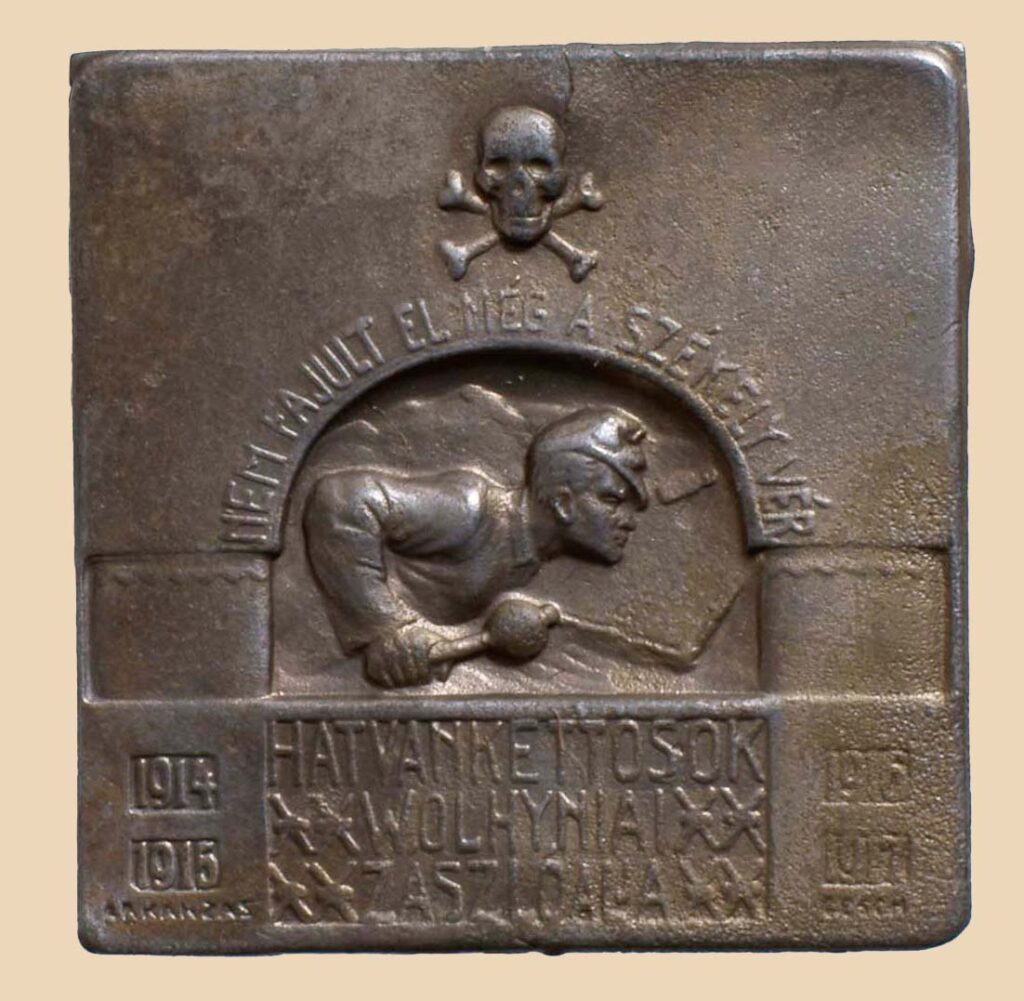
The assault battalions were organized at division level from 1916 onwards. Each of the four infantry regiments belonging to the divisions provided a squadron of selected crews. This is how the four squadrons came together into the assault battalion of the division. So each regiment only gave one company strength. That’s why it’s not possible that these two battalion insignia were belonging to assault troops.



